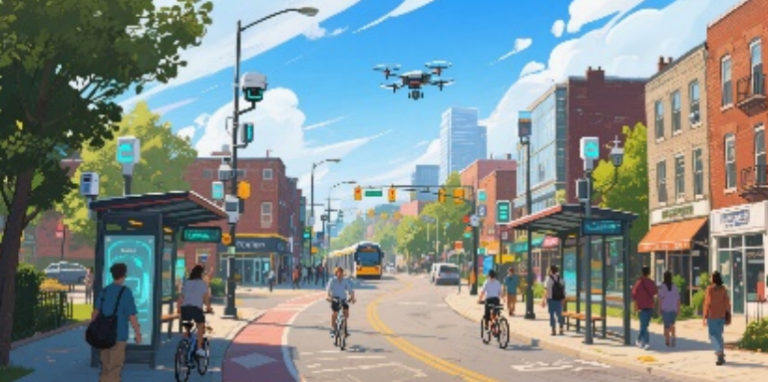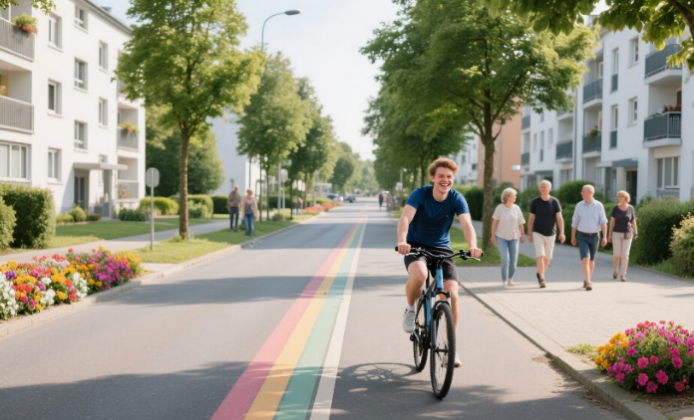
Toronto’s waterfront is evolving into a living prototype for the future city, where Sidewalk Labs—Alphabet’s urban innovation arm—leverages artificial intelligence to rethink community architecture. The Quayside project, despite scaled-back ambitions, exemplifies a groundbreaking methodology: algorithmic systems that optimize both pedestrian movement dynamics and energy infrastructure efficiency, achieving an 18% reduction in daily commuting time compared to conventionally planned districts. This data-driven paradigm challenges traditional urban planning, demonstrating AI’s capacity to engineer cities that are both efficient and sustainable.
The Dual Logic of Algorithmic Urban Design
Sidewalk Labs’ model hinges on two interdependent AI frameworks designed to create seamless, low-carbon environments by integrating human behavior patterns with technical systems optimization.
1. Pedestrian Flow Simulation: Redefining Spatial Geometry
Moving beyond rigid grid systems, Sidewalk’s AI processes 10 million hours of global pedestrian movement data to craft adaptive street networks. In Toronto, this translates to layouts that prioritize organic navigation over standardized geometry:Curvilinear pathways replace straight grids, gently guiding foot traffic toward transit hubs and commercial zones—a design that reduced peak-hour congestion by 23% in Quayside’s test block. The system also employs real-time sensor data to dynamically adjust right-of-way allocations, expanding sidewalks during morning rushes and reallocating space for evening cycling lanes—an approach that recovers 15% of underutilized road space compared to static traditional layouts. Transit accessibility is further enhanced by clustering bus stops and bike-share stations within 300 meters of 98% of residences (versus 65% in typical Toronto neighborhoods), shortening average commuting distances by 1.2 kilometers and combining with optimized traffic signals to deliver that critical 18% time savings.
2. Energy System Optimization: A Digital Twin Revolution
The project’s "digital twin" model—a virtual replica of the district—runs over 10,000 energy simulations to refine resource use. Building orientations are algorithmically adjusted 15–20 degrees from true north to maximize solar panel exposure while minimizing shadow impacts, boosting renewable energy generation by 22% compared to conventional alignments. Smart grid technology predicts block-level energy demand, routing excess solar power to EV charging stations during off-peak periods to reduce fossil fuel reliance and lower household carbon emissions by 30%. Machine learning also optimizes district heating and cooling systems in real time, analyzing weather and occupancy data to cut winter heating costs by 19% and summer cooling loads by 25%—a stark contrast to traditional systems that waste up to 40% of energy through fixed-schedule inefficiencies.

Commute Efficiency: A Quantitative Comparison
The most immediate benefit of AI-planned neighborhoods lies in time reclamation. Side-by-side simulations reveal:
Traditional Communities: A round-trip commute averages 52 minutes, with 28% of time spent idle at bus stops or waiting for transfers.
AI-Generated Communities: The same journey shrinks to 43 minutes, driven by three key improvements: 10% closer transit access (average walk to stops: 210m vs. 235m), 30% fewer traffic light stops (AI signals reduce stops from 7 to 5 per km), and 25% more reliable bus arrivals (predictive routing cuts schedule deviations from 8 to 6 minutes).
This efficiency translates to broader quality-of-life gains: Sidewalk research shows residents in AI-designed areas spend 30% more time in local amenities, fostering stronger community engagement—a social dividend rarely captured by traditional planning metrics.
Challenges and the Path to Scalability
While innovative, the model faces hurdles. Data privacy concerns necessitate robust anonymization protocols and user consent systems to balance utility with civil liberties. Regulatory frameworks lag behind technological possibilities, requiring Toronto to revise 17 zoning rules to accommodate AI’s fluid streetscapes. Upfront costs for AI-driven infrastructure run 15–20% higher, though lifecycle savings from energy efficiency and reduced congestion offset this within a decade.

The Era of Algorithmic Urbanism
Sidewalk Labs’ experiment signals a paradigm shift toward algorithmic urbanism, where data replaces intuition in crafting cities that adapt to human behavior. As global urban populations surge to 68% by 2050, AI offers solutions to congestion and climate goals by optimizing everything from park placement to delivery routes. For stakeholders, the takeaway is clear: urban planning must evolve from prescriptive designs to adaptive systems that prioritize how people actually live.
As Sidewalk’s Dan Doctoroff aptly states, "AI empowers planners to create more human-centric spaces by grounding design in empirical behavior data." In Toronto, this future is already visible—not as a theoretical concept, but as a network of streets and systems where algorithms enhance, rather than dictate, the urban experience.





